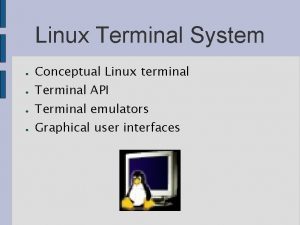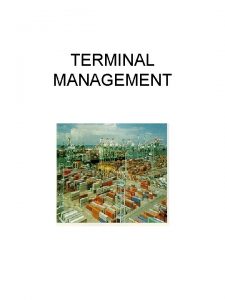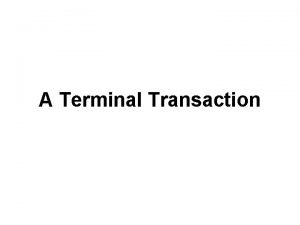Terminal Disclaimer TD A Terminal Disclaimer states that




- Slides: 4

Terminal Disclaimer (TD) A Terminal Disclaimer states that the patent – will expire on the same date as a related patent rather than its own (later – or the same? ? ) expiration date. – will always have the same owner as the related patent. (WHY? ) Why is it called a “terminal disclaimer”? Because the inventors DISCLAIM their right to the remaining TERM of the patent. Now that patents expire at F+20, instead of I+17, where F is the oldest ancestor’s filing date (and I was the specific patent’s issue date, not an ancestor’s issue date) the need for TDs, at least as to the patent Rule 321, 37 CFR § 1. 321 Statutory disclaimers, including terminal disclaimers. TERM, is largely absent. 10 -13 -08 LYDON - TERMINAL DISCLAIMERS 1 A TD allows the applicant to overcome an OBVIOUSNESS-type DOUBLE PATENTING rejection.

Double Patenting • An inventor cannot receive multiple patents for the same invention. • Statutory basis: “ 35 U. S. C. 101 Inventions patentable. ” • Patent Practice: See “MPEP § 804, Definition of Double Patenting [R-5]. ” 10 -13 -08 “Whoever invents or discovers any new and useful process, machine, manufacture, or composition of matter, or any new and useful improvement thereof, may obtain a patent therefor, subject to the conditions and requirements of this title. ” LYDON - TERMINAL DISCLAIMERS Next slide 2

Double Patenting “The doctrine of double patenting seeks to prevent the unjustified extension of patent exclusivity beyond the term of a patent. The public policy behind this doctrine is that: ‘The public should. . . be able to act on the assumption that upon the expiration of the patent it will be free to use not only the invention claimed in the patent but also modifications or variants which would have been obvious to those of ordinary skill in the art at the time the invention was made …. ’ In re Zickendraht, 319 F. 2 d 225, 232, 138 USPQ 22, 27 (CCPA 1963) (Rich, J. , concurring). ” (1 st ellipsis in original, 2 nd ellipsis mine). • An inventor cannot receive multiple patents for the same invention. • Statutory basis: “ 35 U. S. C. 101 Inventions patentable. ” • Patent Practice: See “MPEP § 804, Definition of Double Patenting [R-5]. ” 10 -13 -08 LYDON - TERMINAL DISCLAIMERS 3

Why did Fontirroche have to file a TD? • The ‘ 594 patent is a continuation-in-part of serial no. 189, 209, which issued as patent no. 5, 538, 510 (Fontirroche patent for “Catheter having coextruded tubing”) http: //www. google. com/patents? id=Zj. UTAAAAEBAJ • The disclosures of the two patents are similar. (WHY? What might be different? See PARK slides. ) That means that the Examiner found the CLAIMS in the application that became the ‘ 594 patent to be OBVIOUS in light of the DISCLOSURE of the (parent) issued patent. (How could they NOT be? ) 10 -13 -08 LYDON - TERMINAL DISCLAIMERS 4







